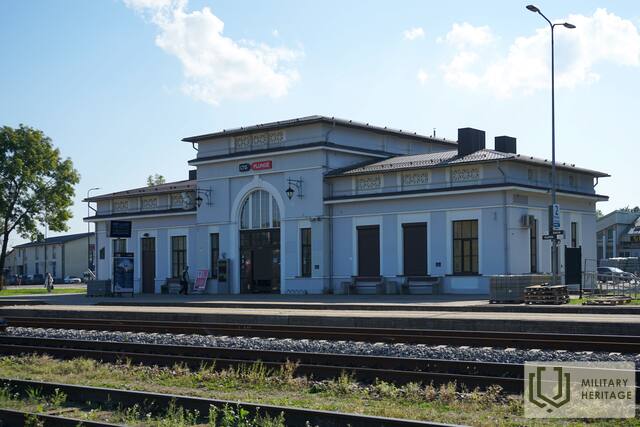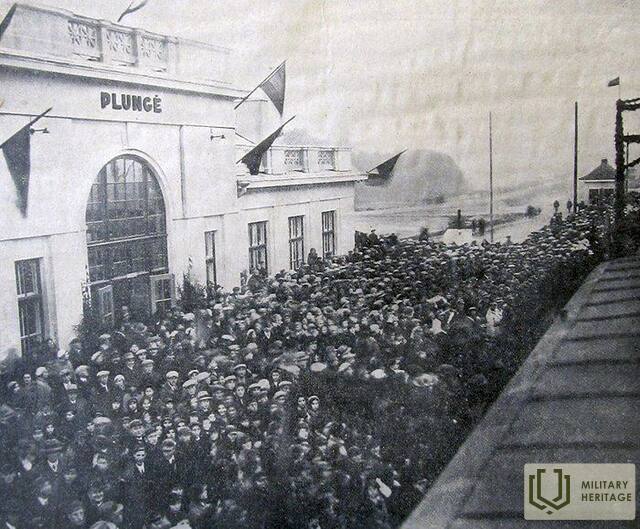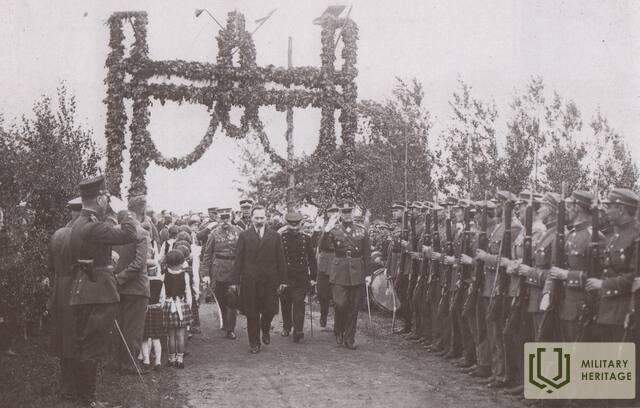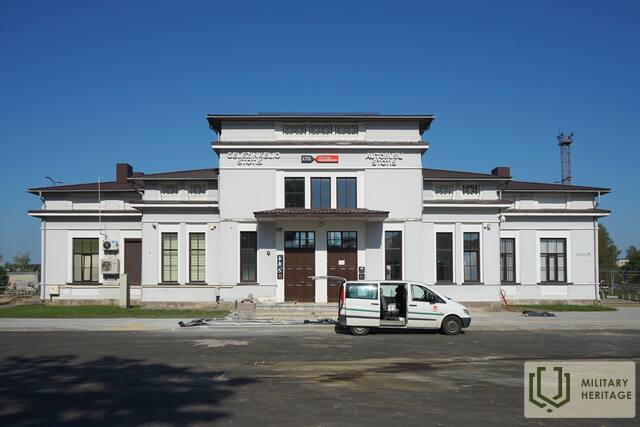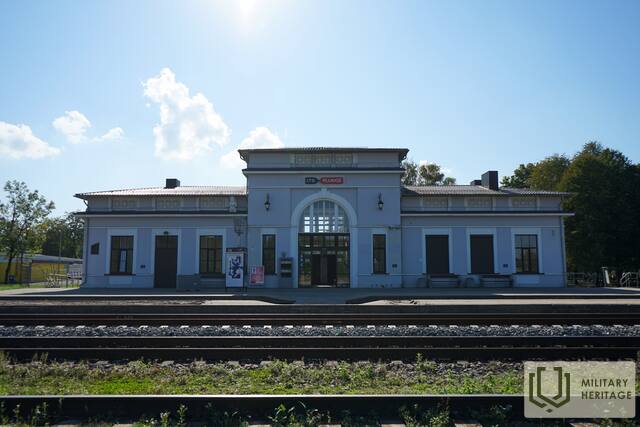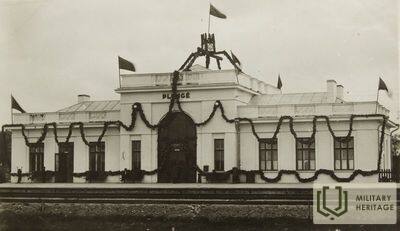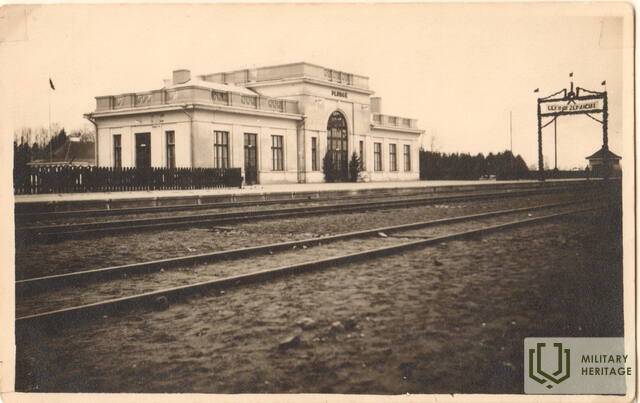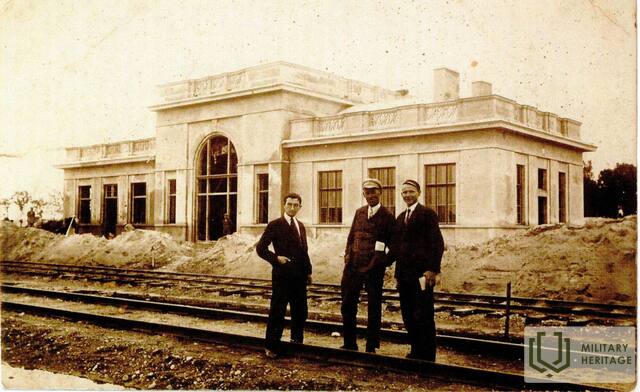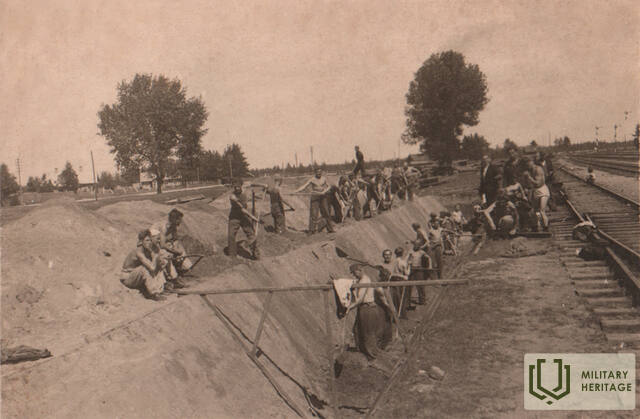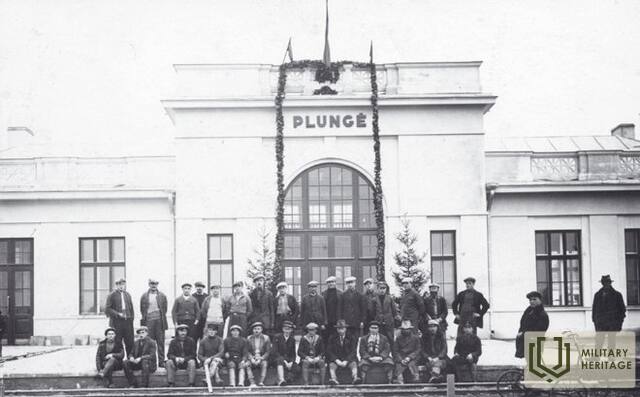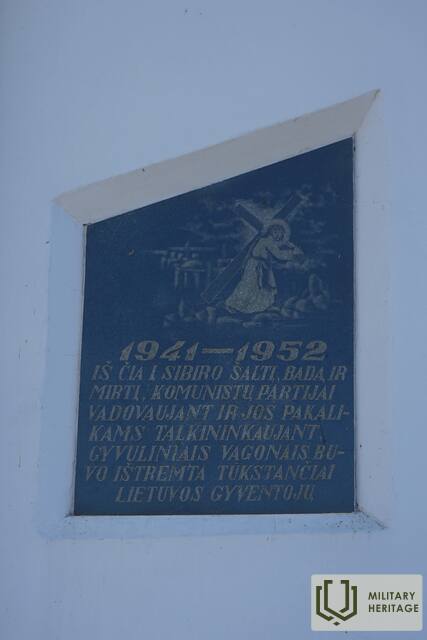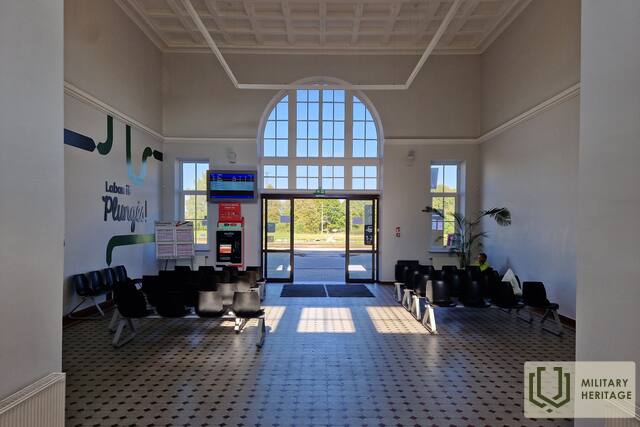Plungė railway station Memorial site

The railway station in Plungė was built as part of the Telšiai-Kretinga line, which was built by the Danish company Höjgaard&Schult. The construction of the station began in 1930, and the main works coincided with the great Plungė fire of 1931, which nevertheless did not stop the process. The station was opened on 29 October 1932.
The Plungė railway station was built according to a typical project, a similar station is located in the city of Telšiai. In the architecture, between the one-story side wings, a two-story central part with a vestibule inside stands out, and an outstanding aesthetic element is the openwork decor of the roof parapet, which is currently being reconstructed.
During the interwar years, the Plungė garrison soldiers' orchestra was popular in the city, which would accompany departing reserve soldiers home from the new station with music. It is recorded that on September 18, 1938, soldiers returning from field exercises were ceremoniously welcomed at the Plungė railway station by gymnasium and elementary school students, teachers and other townspeople.
During the Cold War, Plungė railway station also became important in the military industry. In the period 1960-78, the Šateikiai and Plokštinė forests were home to the Šateikiai above-ground and Plokštinė underground thermonuclear missile launch bases. Both during their construction and later, during the period of operation, construction materials, weapons and everything else were transported by train to the Plungė and Šateikiai railway stations.
During the mass deportations of the population to camps by the Soviet occupation authorities, in 1941-1952 a number of them were also deported from the Plungė railway station, as evidenced by a commemorative plaque installed on the wall of the passenger hall building. The plaque was unveiled on June 14, 1991, thanks to the efforts of the members of the Plungė group of the Lithuanian Reorganization Movement and the Plungė company of the Lithuanian Riflemen's Union.
Used sources and references:
https://www.autc.lt/architekturos-objektas/?id=1943
https://www.plunge.lt/wp-content/uploads/2022/10/PLUNGES-GELEZINKELIO-STOTIS-SVENCIÆA-90.pdf
http://www.genocid.lt/Statiniai_Vietos/Paminklai/Plunge_paminklai.htm
Ramonas, G. (2018). Cultural activities of the Plungė garrison in 1934–1940. Lituanistica, 64(1).
Related timeline
Related topics
Related stories
Mokytojos Rimtautės kelias į Sibirą
Just two months after their wedding, teacher Rimtautė Jakaitienė was exiled to Siberia, along with her husband and his parents. Without trial, without charges - simply for being family.
A nine-year-old's journey into exile
Writer Regina Guntulytė-Rutkauskienė, who was exiled at the age of nine, remembers the deportation of June 14, 1941, when she and her family were taken to Siberia. Her story reveals not only the physical but also the emotional pain of exile, which accompanied her even after returning to Lithuania.
Women's work in Soviet exile
Lithuanian exiles, accustomed to traditional female roles in interwar Lithuania, faced hard physical labor and a new reality in exile, where there was no longer a distinction between "male" and "female" work.




